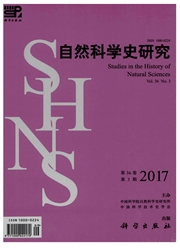

 中文摘要:
中文摘要:
奥格·玻尔是丹麦著名物理学家,其父是尼尔斯·玻尔。尼尔斯·玻尔通过引入量子化条件,提出了玻尔原子模型并以其成功地解释了氢原子光谱;他还提出了互补原理和哥本哈根诠释来解释量子力学,对20世纪物理学的发展有深远的影响。父子两人都曾获得诺贝尔物理学奖。尼尔斯·玻尔1937年曾来中国访问,在中国学术界和教育界引起巨大反响。奥格·玻尔曾于1962、1973年两次来华。文章根据档案及其他相关原始史料梳理了1962年奥格·玻尔夫妇及尼尔森副教授一行三人来华的历史过程,并作了深入的分析。研究表明,奥格·玻尔等人的该次来华,不仅提供了具体而实际的帮助,而且对中国核物理学的发展有重要的推动作用,同时也促成了新中国成立后中国与西方签署的第一个科学交流协议。在当时大多数西方国家不承认新中国的情况下,奥格·玻尔表明了与父亲一致的态度:反对国际上封锁中国的政策,继续做中国的好朋友,愿意成为联系东西方物理学交流的桥梁,体现了科学家的国际主义精神。
 英文摘要:
英文摘要:
Auger Bohr is a famous Danish physicist. His father Niels Bohr not only put forward Bohr's model which successfully explained the hydrogen atom spectrum by introducing quantization condition, but also introduced complementary principle and Copenhagen interpretation to advance quantum mechanics, thus exerting a profound impact on the development of twentieth-century phys- ics. Niels Bohr and Aager Bohr both won the Nobel Prize for physics. Niels Bohr visited China in 1937, which was a significant event in the Chinese academics and education circles. Auger Bohr also visited China in 1962 and 1973. This article describes and analyses the story of the China visit by Auger Bohr and his wife with Bent Nielsen. Bent Nielsen in 1962 based mainly on newly discovered archival records. This study shows that Auger Bohr's visit not only provided concrete and practical help for the development of nuclear physics in China, but also resulted in the first agreement on sci- entific exchanges between the People's Republic of China (PRC) and the West. At the time, most Western countries did not recognize the PRC, but Auger Bohr agreed with his father: he opposed the international blockade against the PRC, continued to maintain the friendship with Chinese scientists, and would like to serve as a bridge for the communication between the physicists in the East and their counterparts in the West, demonstrating his spirit of scientific internationalism.
 同期刊论文项目
同期刊论文项目
 同项目期刊论文
同项目期刊论文
 期刊信息
期刊信息
